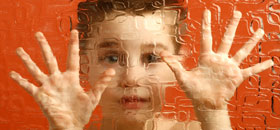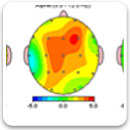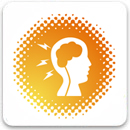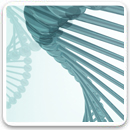Autism, Asperger, PDD
 Autism is a disorder of neural development that is characterized by impaired social interaction and communication, and by restricted and repetitive behavior. These signs all begin before a child is three years old. Autism involves many parts of the brain; how this occurs is not well understood.
Autism is a disorder of neural development that is characterized by impaired social interaction and communication, and by restricted and repetitive behavior. These signs all begin before a child is three years old. Autism involves many parts of the brain; how this occurs is not well understood.
The two other autism spectrum disorders (ASD) are Asperger syndrome, which lacks delays in cognitive development and language, and Pervasive Developmental Disorder - Not Otherwise Specified (PDD-NOS), diagnosed when full criteria for the other two disorders are not met. Asperger syndrome is an autism spectrum disorder, and people with it therefore show significant difficulties in social interaction, along with restricted and repetitive patterns of behavior and interests. It differs from other autism spectrum disorders by its relative preservation of linguistic and cognitive development. Although not required for diagnosis, physical clumsiness and atypical use of language are frequently reported. Pervasive Developmental Disorder - Not Otherwise Specified (PDD-NOS) is one of the pervasive developmental disorders and autism spectrum disorders. PDD-NOS is a diagnosis for people who are well-described by the "PDD" label, but cannot be categorized by any other disorder. It is usually milder than autism and has similar symptoms to autism, with some symptoms present, and others absent. This disorder is sometimes called "atypical autism" by autism specialists. The boundaries between PDD-NOS and non-autistic conditions are not fully resolved.
Treatments
 |
QEEG Brain MappingWe routinely perform a QEEG for moderate to high functioning autism. We found that the QEEG profiles vary widely as it is a spectrum disorder. Some have cortical hyperactivity at various parts of the brain while others have exhaustion and shut downs. As such, a brain mapping may provide important information to design an individualized brain exercise program. |
 |
Brain Exercise using NeurofeedbackWe are among the first to use neurofeedback to exercise the brain of Autistic children in 1995. Using neurofeedback, we can exercise specific parts of the brain directly. Through neurofeedback, we have helped to improve the quality of life of many autistics, both children and adults. Some children have even done successfully in main stream schools. Benefits of brain exercise include:
|
 |
BiochemistryMany research studies show that there are numerous causes that result in Autistic symptoms. These include:
There may be many other causes which are yet to be discovered. But the above are very common among autistic children. Tests can be done to quickly identify any of these know causes. Once identified, they can be treated using supplements and dietary changes. We have helped many special needs to improve their quality of life! Our brain exercise program and biochemistry intervention can help the special needs child tremendously! Wait no more! Take action now! |

